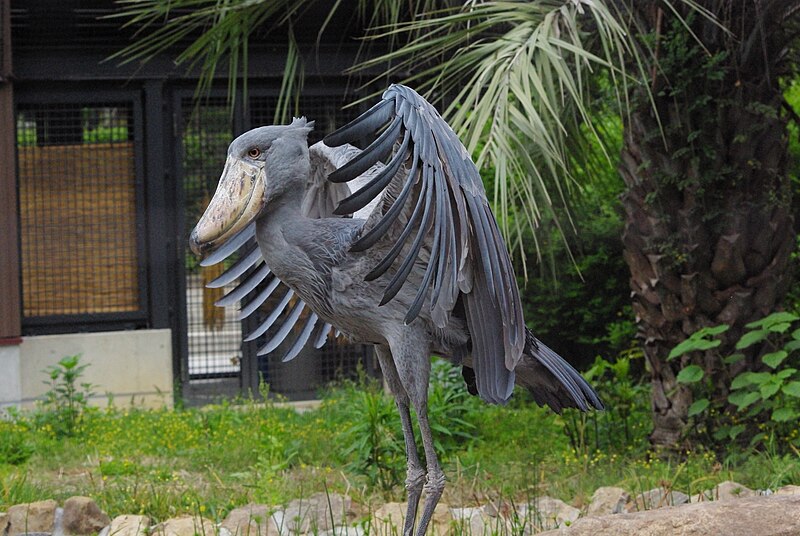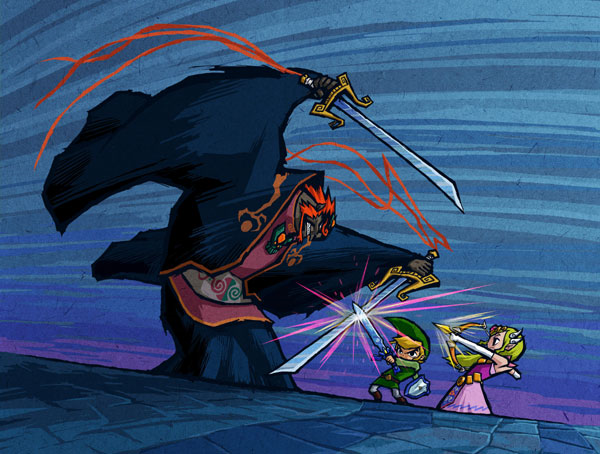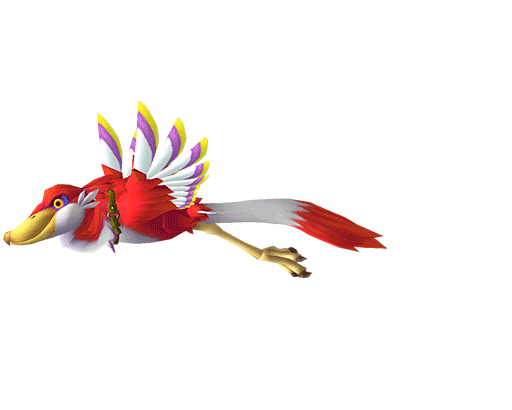There aren't a lot of moving parts to this picture. In fact, it's probably one of the simplest of the whole Legend of Zelda Cosplay Project.
The background is a simple image of mountains poking through a layer of clouds...suggestive of Skyloft and other islands in the sky from the game.
Link is calmly posed. In the original picture he was perched on a beam overlooking a valley.

And that thing he's riding? It's a loftwing—no ifs, ands, or buts about it!
I've created a lot of monsters from scratch for this project with varying degrees of accuracy, but how did I manage to get every detail of this bird right?
Well, the answer is fairly simple: loftwings are real.
Meet the Shoebill
As it turns out, the real-life inspiration for the loftwing can be found at your local zoo:

Image from: Wikimedia Commons
This is a Shoebill stork, the bird Nintendo based the loftwing on. In fact, the stork pictured above is from a zoo in Noichi, Japan, so who knows? It could be the original loftwing!
Anatomically speaking, the loftwing design doesn't take anything away from shoebills. It does add a few things though.
First, size. At 5 feet tall, and with almost an 8-foot wingspan, shoebills are already enormous birds, but unless we're going with Wind Waker proportions it's probably still not enough to tote Link around...
[caption id="" align="aligncenter" width="333"]
Image from: Zeldapedia
Second, color. All dressed in blue-gray, shoebills are much more drab than their loftwing cousins. Still, it's not a bad color, and in my edited photo I let a little of it show through near the wing tips where Link's loftwing has a streak of blue.
Third, the tail. On top of the fan-shaped tail that Shoebills have, loftwings have a set of longer feathers. In the game, this tail extension looks plump and almost furry, but to keep it realistic I chose to go with just a few long feathers instead, borrowing the exotic plumage from the long-tailed widowbird.

Photo from: Wikimedia Commons
Put it all together and you have a beautiful, incredibly realistic loftwing:

Sometimes, the simplest cosplay pictures are some of the best cosplay pictures, right?
Learning from Loftwing Anatomy
Now that we've covered actually creating the loftwing, please indulge me as I geek out just a little bit deeper. With a background in both paleontology and physical therapy (my "day job"), I'm a bit of an anatomy nerd.
In the animal kingdom, form follows function. So, if we accept shoebills as the loftwing's closest living relative, what can their adaptations tell us about the way loftwings lived?
Shoebills typically only fly 100-500 meters at a time, but their wings are capable of much more. They fly slowly, gliding between each flap, and have broad, slotted wings that are well-adapted to soaring.
Remind you of the game at all?
 Image by Xane.
Image by Xane.
Wings like these aren't made for maximum-efficiency long-distance flight like an albatross', however. The slots between the feathers create too much drag for that.

Photo from: birdsleuth.org.[/caption]
Loftwing wings are made for thermal soaring. Like eagles and vultures, they use their large wings like a hot air balloon to catch rising plumes of warm air ("thermal updrafts") and float on them high into the sky. Again, remind you of the game at all?
Nintendo didn't just take the loftwing's design from the shoebill, they also copied it's basic flight patterns.
Now, what has this got to do with the price of eggs? Well, thermal updrafts typically occur over land.
In the beginning of the Skyward Sword game, the people in the floating city of Skyloft believed that the "surface" world below the clouds was a myth. But if they'd known a little more about their birds they would have thought differently.
No surface = no thermals = no soaring loftwings.
Case closed.
Anyways, thanks for taking a moment to indulge my nerdy side. Who knew that Nintendo was so scientific in designing Skyward Sword?
Summary
Whether you're a Nintendo game designer or a cosplay artist trying to turn fiction into fact, some of the most beautiful designs start in real life.

After all, reality is stranger (and more beautiful) than fiction, right?







